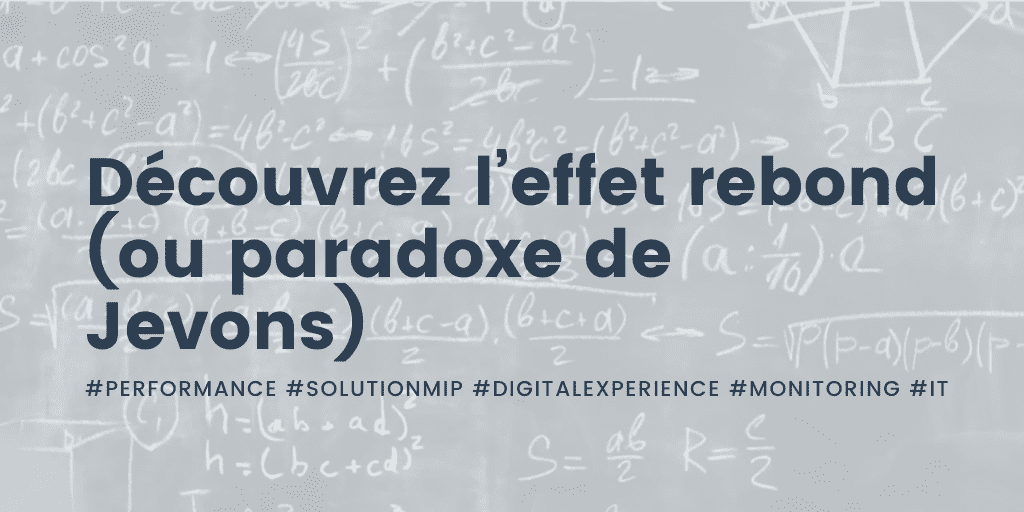
The rebound effect (or Jevons’ paradox) in IT performance monitoring
The Rebound Effect (or Jevons’ Paradox) is what destroys so many good initiatives. Example: you insulate your house and instead of the expected 40 or 50% energy savings, the gain is only 10 or 20% because you heat more comfortably. And since the electricity bill has gone down, you’re taking more baths and hanging out in the shower more.
The same phenomenon for road safety: when you raise and widen a curve you only end up with slightly fewer accidents, but those that occur are much more severe: people go faster. The same is true for every new piece of equipment. To the great surprise of insurers, ABS has not reduced the number of accidents on the road: people brake later and more forcefully because they are less afraid cars slipping.
In IT, for example, telecommuting requires each employee to heat and light his or her own home, rather than working together in a large office, resulting in additional energy costs.
Another example is the LCD flat screens that were supposed to reduce energy consumption, but the size as well as the number of screens per person have increased thereby rendering any energy consumption reduction insignificant.
The risk of the Rebound Effect
We are currently observing this paradox with our customers in application designs. Hardware resources seem infinite, both in CPU/RAM, disk IO and in the number of machines that can be easily added on the fly. This has prompted a number of services/micro-services/features which far exceed those of the previous decade. Architects no longer care about resources, nor about the final customer, since resources are imagined to be much greater than any final consumption could be.
Today, calculation processes are dedicated to the end user’s browser, which is supposed to be as powerful as the developer’s and those resources allocated to him in his development environment (fibers, virtual machines galore, …). Web interfaces download all elements to be processed on the fly, rather than starting with a carefully thought out and refined filter. Web interfacesdownload the whole set of elements will be processed on the fly rather than a thoughtful and refined filtering from the start.
Protecting users
The short or long term end user aspect is neglected in current designs.
Jevons’ Paradox has led to an approach of “Let’s do it, it will work, there’s room, we’ll reflect on a finer design later, if needed, and we’ll conduct our monitoring later also.”
Warning, the end user is increasingly fickle and an application or website that doesn’t perform well and in continuity from the outset will have little chance of being seen again. Our advice is to take the time to design, eliminate unnecessary work and measure end-user perception before it’s too late.
You want application performance monitoring software that allows you to be proactive in managing services and performance.
Don’t want to make these mistakes? Opt for a integrated IT monitoring solution.
For more information : Jevons’ Paradox and Green IT
For more information : AMI, is it a false friend??